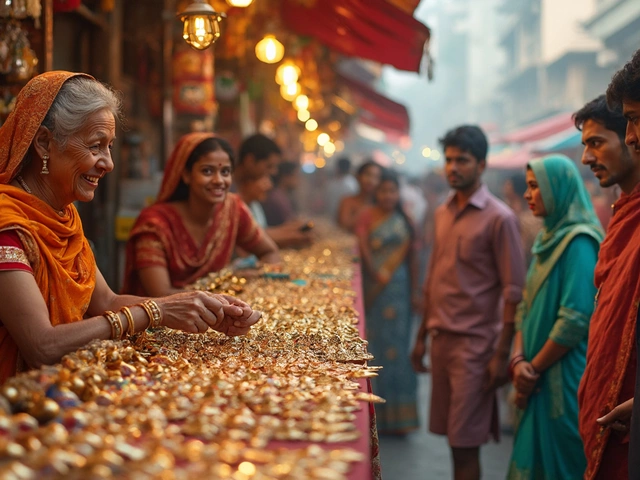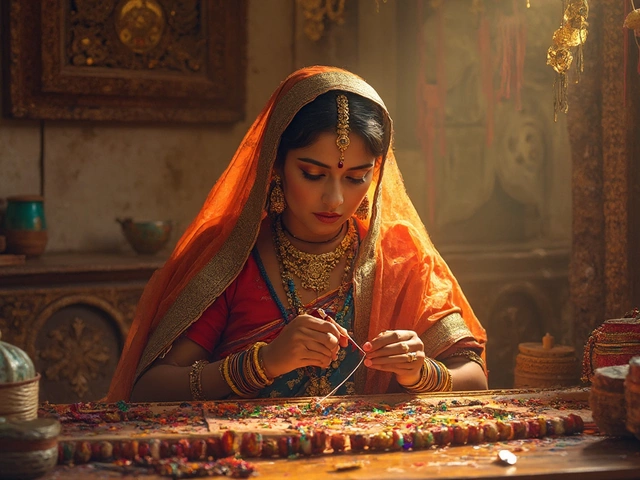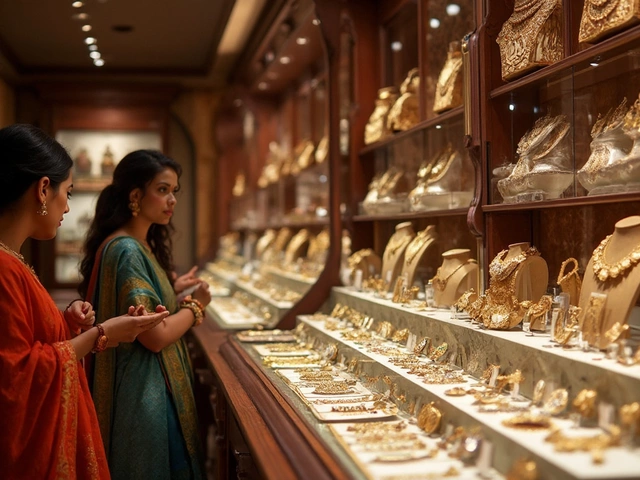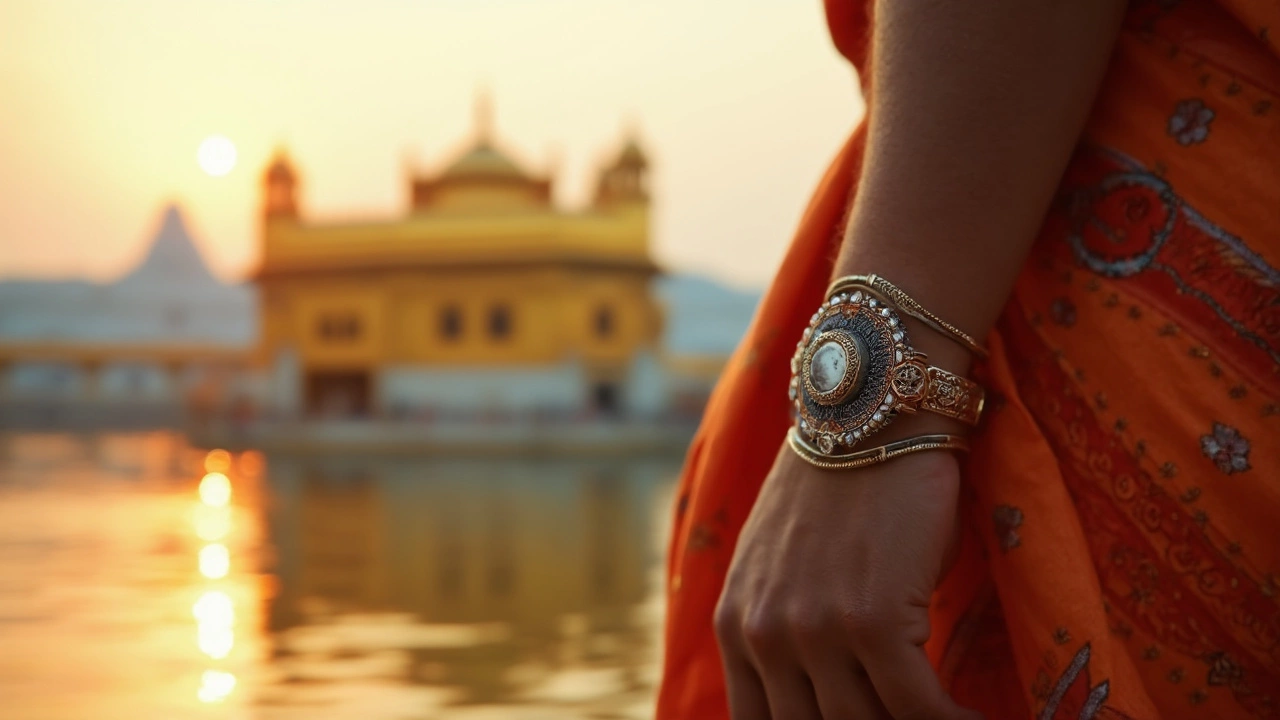
The kada isn’t just eye candy on someone’s wrist—it stands for something much bigger, especially in Indian communities. Walk through any busy street in North India, and you’ll spot men, women, and even kids rocking these sturdy bangles. They look simple, but there’s a story packed into every curve.
Plenty of people, from Sikhs to Hindus, wear a kada as more than decoration. For Sikhs, the steel bangle is a must-have—a symbol of faith and endless unity. For others, it might be about strength, tradition, or just keeping a connection to family roots. Ever wondered why some folks say the kada gives them a sense of security or reminds them to do the right thing? That’s part of the magic.
If you’re thinking about getting a kada, there’s more to it than just picking one out. Size matters. You want it snug, not strangling your wrist. Material counts too: steel for purity and toughness, silver for style, gold if you’re feeling fancy. Felix, my son, once picked a kada at a temple bazaar, and getting the right fit was a bit of a science—but it’s worth doing right.
- Roots and History of the Kada
- Why Do People Wear a Kada?
- How to Wear and Choose a Kada
- Modern Trends and Fun Facts
Roots and History of the Kada
The kada goes way back—centuries, actually. Early versions of this bangle showed up in ancient Indian texts and cave art, right alongside other pieces of jewelry. But the kada as we know it came into focus with Sikhism. Guru Gobind Singh, the tenth Sikh Guru, made it a core part of the Sikh identity in 1699, as one of the Five Ks (articles of faith) that baptized Sikhs must wear. The idea? Keep the faith strong, remind followers of honest action, and ditch anything super fancy or gold-plated—so everyone was equal.
Hindus also embraced the kada, though with different twists. For them, it can be connected to stories about warriors and protectors. The bangle, usually made of iron, was thought to absorb negative vibes and even ward off bad luck. In rural Punjab, wrestlers believed that wearing a thick iron kada made their arms stronger and their spirit tougher—sort of like a lucky charm, but with actual weight to it.
Here’s a quick table, just in case you’re interested in how the kada shifted over the ages:
| Time Period | Material | Who Wore It? | Meaning |
|---|---|---|---|
| Ancient India | Copper, Iron | Men and Women | Protection, Status |
| Late Medieval (Sikhism) | Steel | Sikh Men and Women | Faith, Equality, Reminder of Duty |
| Modern Times | Steel, Silver, Gold | All Ages | Faith, Style, Heritage |
Most people are surprised that the kada isn’t just a religious thing. In the 21st century, you’ll spot kids, athletes, even Bollywood actors wearing it. Sometimes it’s tradition, sometimes it’s family pride, or just because it looks cool. But every kada still carries that old-school punch—reminding folks where they come from, and nudging them to keep their actions in check.
Why Do People Wear a Kada?
People grab a kada for all sorts of reasons, and none of them are random. If you walk into any Punjabi household, you’ll probably spot a kada on a wrist or two. For Sikhs, wearing a kada is non-negotiable—it’s one of the "Five Ks" that every baptized Sikh (Khalsa) is expected to wear. It’s supposed to remind them of good deeds, unbreakable discipline, and the strength to stick to what’s right. Hindu families often see the kada as a piece that soaks up spiritual energy, keeping negative vibes at bay. Some folks wear it because their parents did, while others just like the no-nonsense look.
Take a peek at why wearing a kada actually matters in different circles:
- Sikhism: It shows commitment to truth, equality, and the teachings of Guru Gobind Singh. It’s also a symbol of unity since the circular shape has no beginning or end.
- Hinduism: The kada is thought to offer spiritual protection and boost positive energy. It’s even used in some rituals and prayers for good luck.
- Everyday Life: For some, it’s about family roots and keeping traditions alive. For others, it’s just a handy reminder to stay on the straight and narrow.
- Fashion Statement: Let’s be honest—lots of people simply like how it looks. You’ll see folks mixing kadas with watches or even pairing them with other bracelets.
Here’s a quick look at how wearing a kada stacks up across communities and purposes:
| Community/Use | Main Reason | Typical Material |
|---|---|---|
| Sikhism | Symbol of faith and discipline | Steel/Iron |
| Hinduism | Spiritual protection and luck | Copper, Silver, Gold |
| Modern Wearers | Style or family tradition | Steel, Silver, Gold, Brass |
Ever wondered about health reasons? Some folks swear by copper or steel for things like energy levels or joint health, though there isn’t much hard science to back those up. Still, for millions, wearing a kada is about faith, culture, and feeling connected—sometimes all at once.
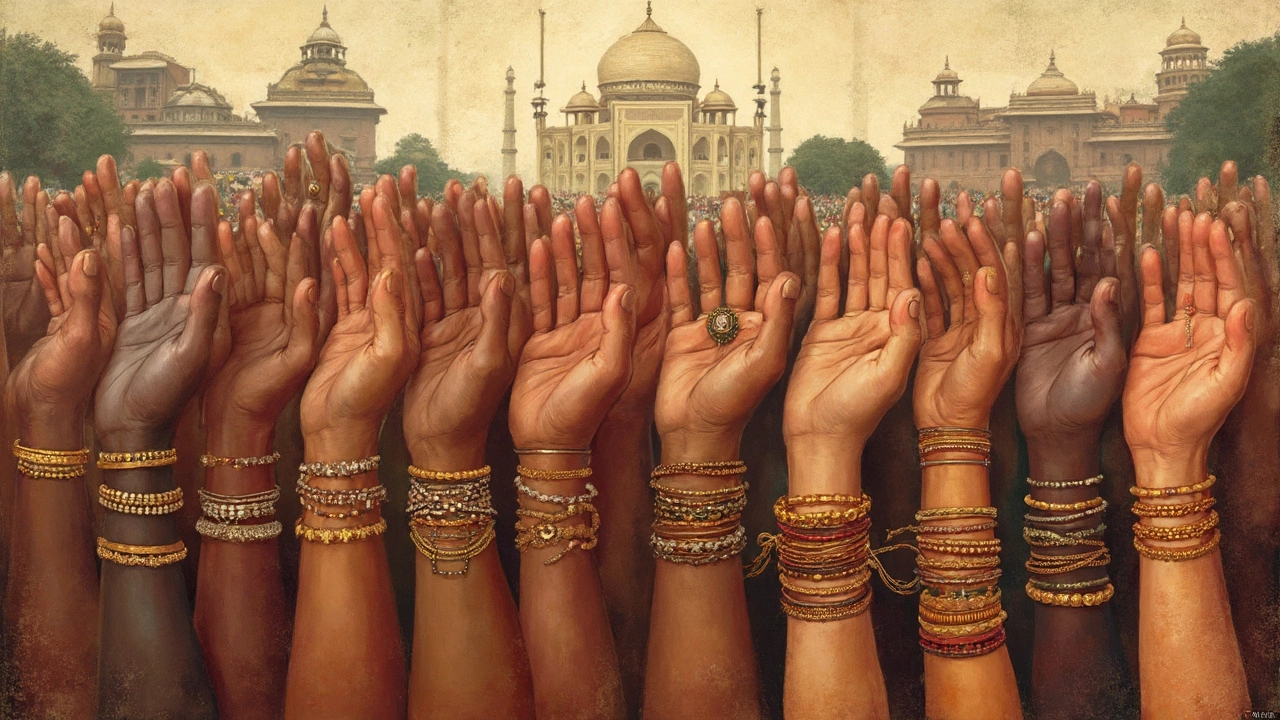
How to Wear and Choose a Kada
Getting a kada that fits and feels right is easier when you know what to look for. First, check the fit. A kada shouldn't slide off while you move your hand around. Too tight, and it can dig in and get uncomfortable. Too loose, and it'll bang into things all day. The most popular way to check the size? Push your thumb in toward your palm and measure the widest part. That’s usually right where your kada needs to squeeze past, but once it's on, it should rest loosely around your wrist bone.
Next comes the material. Traditionally, Sikhs choose kadas made from steel. Why? Kada in Sikhism stands for strength and equality, and steel pretty much nails that idea—plus, it's easy to find and lasts forever. You’ll also find silver and gold kadas at jewelry shops, which some people pick for style or family celebrations. There are even copper and brass options, sometimes believed to have health benefits, though the science on that is still debated.
If you’re buying a kada for a religious reason, most Sikh temples (gurdwaras) give them out for free or for a small donation—they’re basic, affordable, and made to last. For special occasions like weddings, folks might go for fancier, engraved versions. And here’s a tip: always try before you buy. Your wrist size can change during the day, especially in the heat. If you can’t try it on, measure your wrist with a string and bring that along to the shop.
When it comes to actually putting it on, it’s all about a bit of a twist. Most people use a small amount of lotion or soap to help the kada slide over their knuckles. Once on, it stays put—no clasps, no fuss. Some wear it on the right wrist, others on the left. In Sikh tradition, men usually pick their dominant hand, but there’s no strict rule. My son Felix likes to swap wrists, just because it feels different day to day.
Quick checklist if you’re shopping for a kada:
- Know your wrist size—measure it, don’t guess.
- Decide on your material: steel for tradition, other metals for style.
- Check for a smooth inner edge—no one likes a scratchy bangle.
- If you want something special, ask for designs or custom engravings.
Wearing a kada is simple, but getting the right one means you’ll actually want to keep it on. And really, that’s what makes it personal.
Modern Trends and Fun Facts
The kada has shifted with the times, but its core stays the same. A decade ago, you’d mostly see it on elders in traditional settings. Now, younger folks and even people outside India add a kada to their style—rocking it with t-shirts or even business suits. In 2023, a poll by an Indian fashion portal found that over 60% of urban men aged 18-30 had worn a kada at least once, mainly for its clean, bold look.
Today, kadas come in all shapes and materials. Besides classic steel and iron, you’ll find kadas made from silver, gold, wood, titanium, and even silicon. Jewellers offer engraved or gem-studded versions for weddings and festivals. Some customize kadas with personal messages, dates, or family crests. This lets folks mix tradition with personal style.
Here are a few cool nuggets you might not know about this kada:
- Bollywood stars like Akshay Kumar and cricketers such as Virat Kohli are often seen wearing kadas. They say it’s about faith and luck.
- A steel kada is part of the Sikh “Five Ks,” a core part of Sikh identity since 1699.
- Some fitness buffs use heavy iron kadas during training, almost like wearable weights.
- Modern safety kadas have RFID tags for kids, helping parents locate them in crowded places.
- In wedding rituals, couples sometimes exchange kadas as a symbol of togetherness—sort of like rings, but with more history attached.
Here’s a quick look at how popular types of kadas trend in India:
| Material | Common Use | Popularity (2024) |
|---|---|---|
| Steel | Everyday/Sikh religious | High |
| Silver | Fashion/casual | Medium |
| Gold | Weddings, festivals | Medium |
| Wood/Silicon | Kids, casual, tech | Low but rising |
So, whether you see it on a Bollywood red carpet or the school playground, the kada keeps evolving. It’s not just a bangle—it’s a piece of identity that fits just about any lifestyle now. Thinking of picking one up? Try something that shows off your story—or just feels good on your wrist.
